France has a long history, and over the course of that history, France has been through many different stages of development. Since the Middle Ages, France has been occupied by different countries, including Germany and Spain. As a result, they have had to rebuild their cities and their monuments multiple times over the centuries.
With centuries of history, France has seen its fair share of ancient structures, monuments, and buildings that have since become landmarks in their own right. From the Roman Empire to Napoleon Bonaparte, France has a number of historical sites that are important in the world’s history books.
If you’re someone who’s interested in exploring France, here’s a list of some of the oldest buildings in France for anyone who wants to learn more about them.
12. 3 Rue Volta
Year Established: 1644
Location: 75003 Paris
Architectural Style: Medieval
Current Usage: Rental Studio
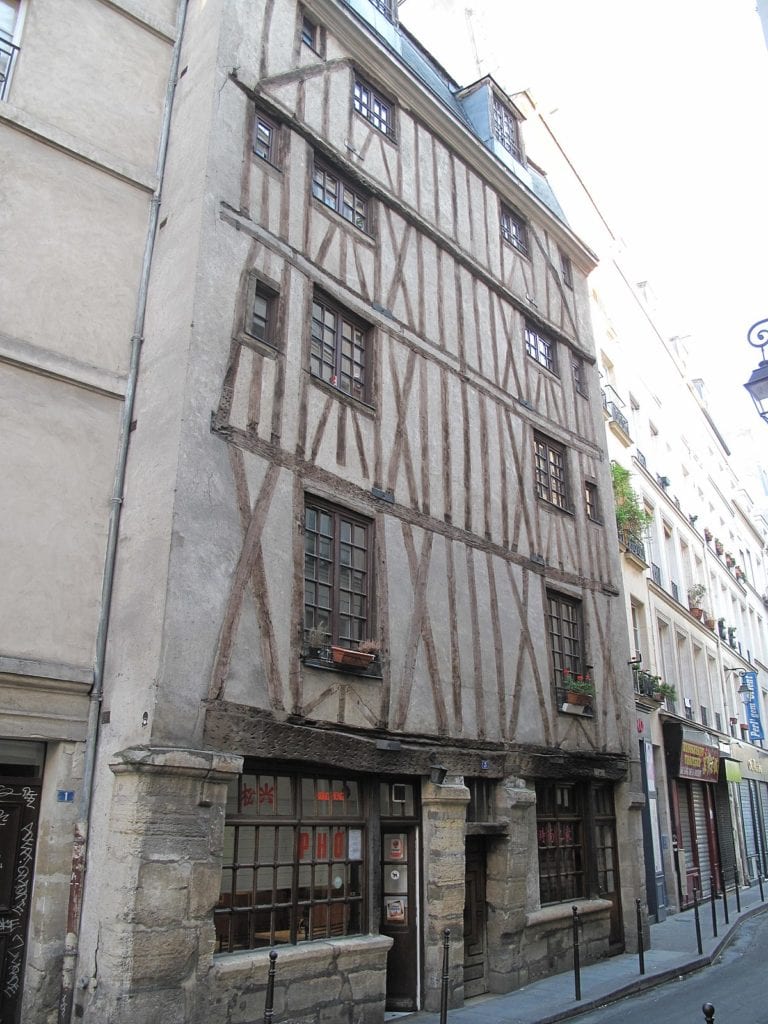
The historical Marais, a marshy region created by an ancient Seine river meander, is where No. 3 Rue Volta is in fact situated. Everything changed in 1979 when historians uncovered antiquated records that demonstrated it barely dated from 1644.
The belief that the structure was constructed in the 1600s is in direct conflict with the fact that the principal building material employed at the time—timber frames—was already outlawed in the 17th century due to fire concerns.
Did You Know?
In the 1970s, it was designated as a “protected area,” and several homes and structures were added to the list of historical monuments at that time.
11. 51 Rue Montmorency
Year Established: 1407
Location: 75003 Paris
Architectural Style: Medieval
Current Usage: Private home and Restaurant
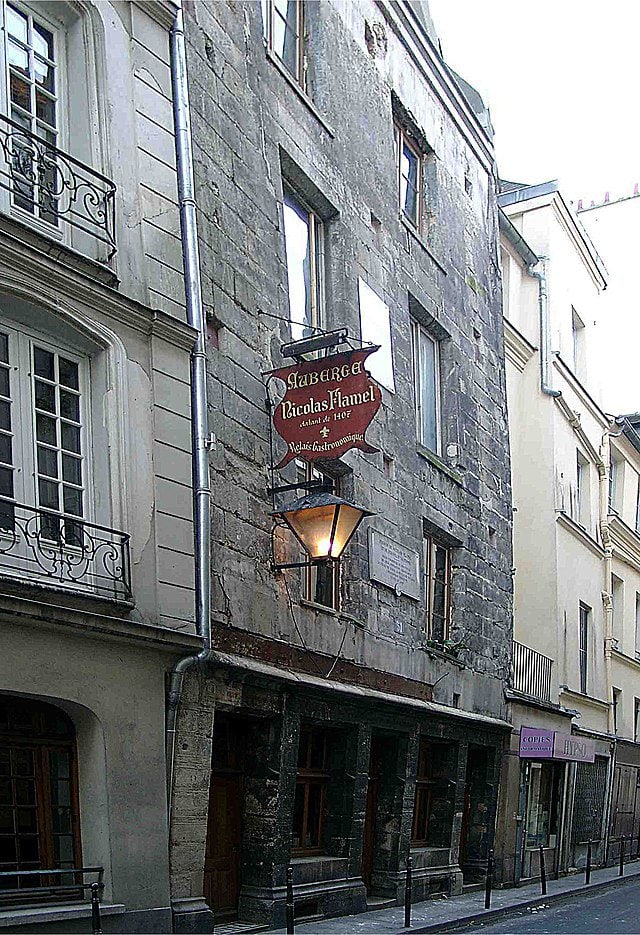
The residence of Nicolas Flamel is a home found at 51 rue de Montmorency in Paris’ third district. The best-known and only remaining of Flamel’s dwellings, it was finished in 1407, as shown on a sculpture above the ground floor, but he never actually resided there. The home is arguably Paris’s oldest.
Did You Know?
Following the loss of his wife Pernelle in 1397, Nicolas Flamel ordered the building to lodge the destitute.
10. Hôtel de Soubise
Year Established: 1375
Location: 60 rue des Francs-Bourgeois, Paris
Architectural Style: Baroque
Current Usage: Archives Nationales

Dedicated to the Prince and Princess of Soubise, the Hôtel de Soubise was built in the early 1700s. On the location in the Marais since 1375, there had existed a fortified manor house. One of the outstanding Rococo examples in France is the interior design of the Hôtel de Soubise.
Did You Know?
In 1704, the prince commissioned architect Pierre-Alexis Delamair to entirely renovate the hotel.
9. La Conciergerie
Year Established: 1302
Location: Île de la Cité, Paris
Architectural Style: Gothic
Current Usage: Law Court

The Conciergerie had been one of the primary prison facilities since the establishment of the Revolutionary Court during the French Revolution. Marie-Antoinette was one of its most well-known inmates. On the location of her cell, a memorial chapel was built during the Restoration.
Did You Know?
Formerly, it was home to kings of France before it became a prison.
8. La Sorbonne
Year Established: 1257
Location: 1 Rue Victor Cousin, 75005 Paris
Architectural Style: French Classical
Current Usage: School
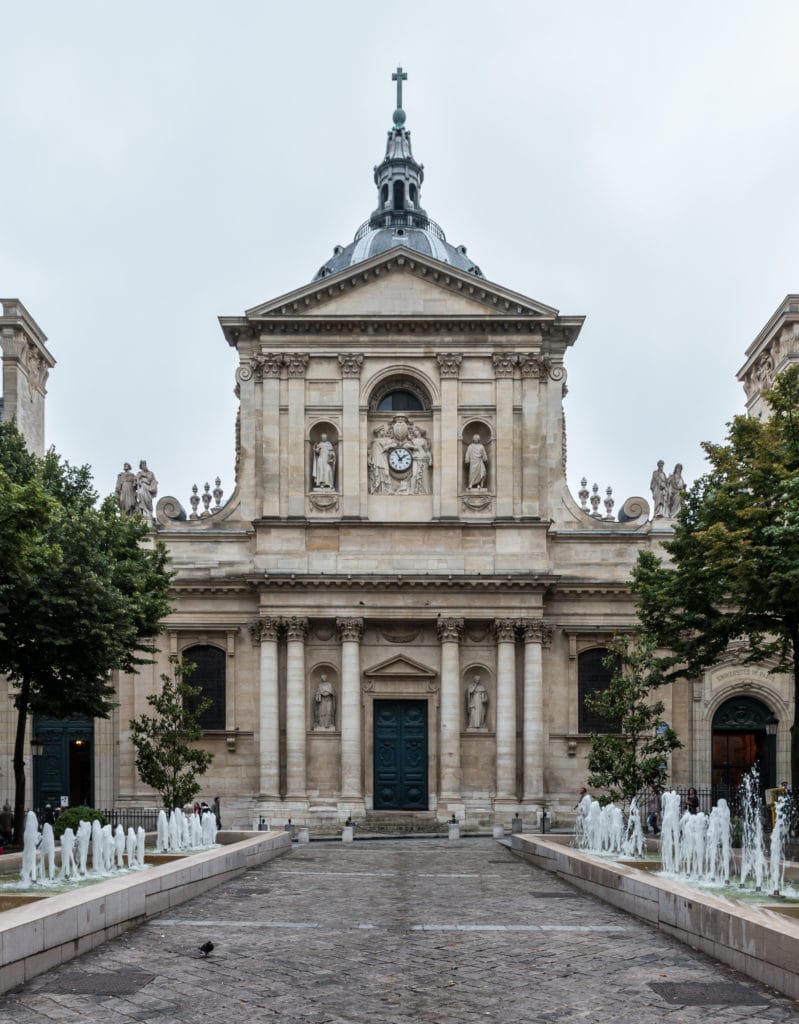
The University of Paris was established at the start of the 13th century with the presence of a group of Parisian teachers and students, which challenged the instruction provided in the schools of the cloister of Notre-Dame de Paris, on the Île de la Cité.
It was divided into four faculties, had its own rules and laws, and established itself on the left side of the Seine while not really having its own buildings.
It was established in 1257 by the master of theology, Robert de Sorbon, and became the focal point of the Faculty of Theology. The “Sorbonne” institution established a strong reputation, adding to the University of Paris’s importance throughout Europe.
Did You Know?
The Sorbonne is known for its greatness, and eight centuries after its inception, the institution continues to hold a prominent position in the world of higher education.
7. Notre Dame de Paris
Year Established: 1163
Location: Île de la Cité, Paris
Architectural Style: French Gothic
Current Usage: Cathedral

The easternmost point of the Île de la Cité is home to Notre-Dame, which was built on the ruins of two ancient cathedrals that were themselves preceded by a Gallo-Roman temple dedicated to Jupiter.
Pope Alexander III laid the high altar’s foundation stone in 1163, and it was dedicated in 1189. By 1250, the choir, the western front, and the nave were finished. Over the subsequent 100 years, porches, altars, and other adornments were added.
Did You Know?
It stands out for its size, age, and architectural appeal and is the most well-known of all the medieval Gothic cathedrals.
6. Maison Carrée
Year Established: 2 AD
Location: Pl. de la Maison Carrée, 30000 Nîmes
Architectural Style: Roman
Current Usage: Museum, Temple
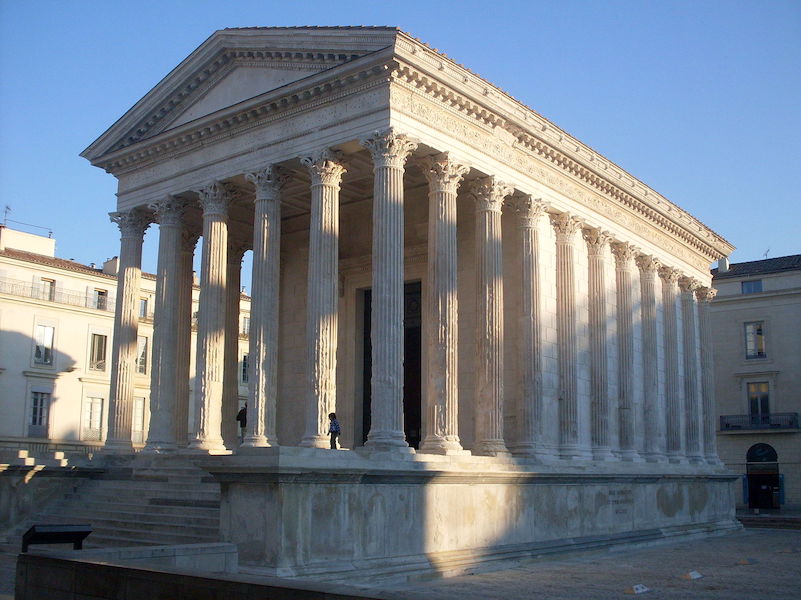
One of the best preserved Roman temples to have survived in the old Roman Empire is the Maison carrée, an ancient Roman temple located in Nîmes, southern France.
In the Middle Ages, the inscription honoring Gaius and Lucius was removed from the temple. Then, Gaius Caesar and Lucius Caesar, the grandsons and adopted heirs of Augustus who both died young, were honored with a dedication or rededication of the Maison carrée between 4 and 7 AD.
Did You Know?
A well-known form of Vitruvian architecture is the Maison Carrée.
5. Gavrinis Passage Tomb
Year Established: 3500 BC
Location: Île de Gavrinis, 56870 Larmor-Baden
Architectural Style: Megalithic Grave
Current Usage: Monument
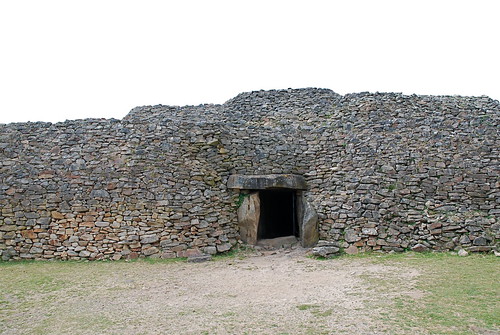
Cairn de Gavrinis was erected on Gavrinis Island in the Gulf of Morbihan about 3500 BCE, when the island was still a part of the mainland.
However, it had stopped being used by 3000 BCE, and finally a portion of the mound fell, obstructing and covering the entrance to the building. The stone structure gradually became covered in wind-blown sand, changing it into a low, rounded hill that looked disturbingly like a cairn.
The 50-meter-diameter mound was finally identified as a passage grave by subsequent excavation and restoration work in the late 19th century and the 1930s. This identification is merely a typology, as the site appears to have been used as a temple rather than a burial site. A 14-meter-long passage connected the exterior to an approximately central chamber.
Did You Know?
Both the chamber’s and the passage’s inner walls are almost totally covered with carved embellishments.
4. Dolmen de Bagneux
Year Established: 4000-2000 BC
Location: 1 Rue des Coteaux, 49400 Saumur
Architectural Style: Megalith
Current Usage: Historical Landmark
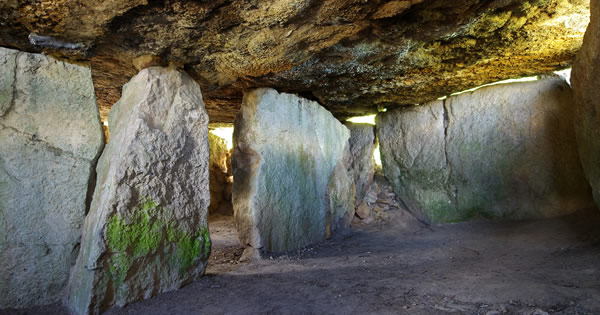
France’s Saumur is home to the megalithic dolmen de Bagneux. It is among the biggest dolmens in both France and Europe. France’s Saumur is home to the megalithic dolmen de Bagneux. It is among the biggest dolmens in both France and Europe.
The tertiary sandstone flagstones that make up the monument were not transported very far. The surrounding heights of Bournand and Terrefort have a stratum of these rather dislocated sandstones.
On how the dolmens were constructed, speculation can only be made. The flagstones must have been raised repeatedly with a variety of levers, and pebbles must have been slid underneath the stone. Once the stone was raised to a certain level and lying on a pile of pebbles, it was simpler to pull it further.
3. Saint-Michel Tumulus
Year Established: 4500 BC
Location: 56340 Carnac
Architectural Style: Megalithic Grave
Current Usage: Historical Landmark
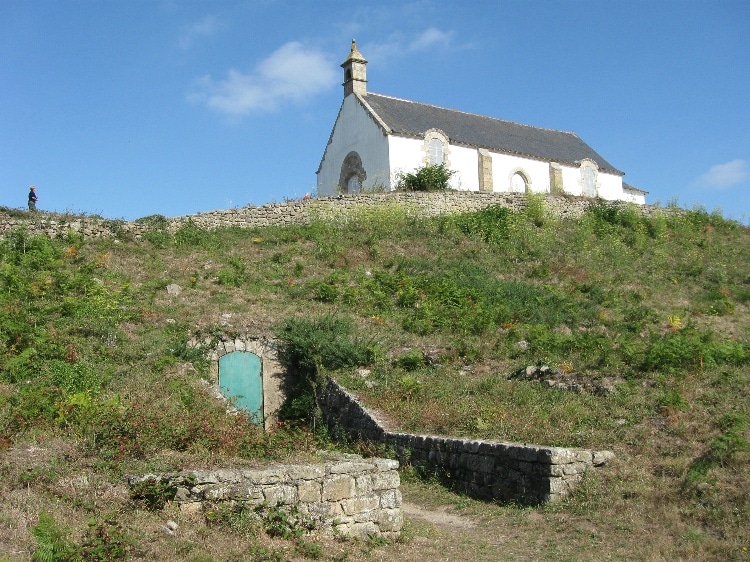
East of Carnac, there is a megalithic funerary mound called the Tumulus of St. Michel. The biggest grave mound in continental Europe is a 125 m long, 60 m broad, and 10 m high mound. There has been substantial debate over the antiquity of the monument, as well as the order in which the core burial chambers and the auxiliary dolmens were built.
Radiocarbon dating was used to date ancient samples, but the findings were too inconsistent to be meaningful.
Did You Know?
There is a chapel currently standing atop the Saint-Michel Tumulus.
2. Tumulus of Bougon
Year Established: 4700 BC
Location: La Chapelle de, 79800 Bougon
Architectural Style: Funerary Architecture
Current Usage: Museum
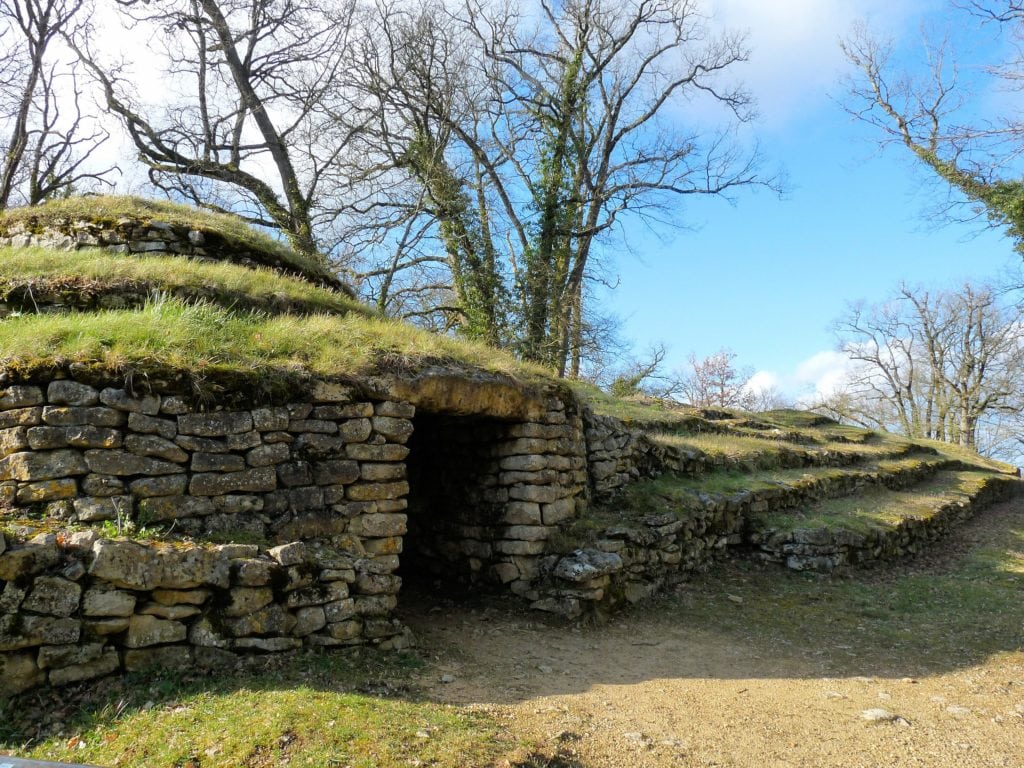
Since 1873, the department of Deux-Sèvres has held the location of the Bougon tumuli, which archaeologists first found in 1840.
The Bougon necropolis, which dates back to 4,700 B.C., is made up of five tumuli, circular or rectangular colossal burials fashioned of stone and dirt. They are among the world’s oldest examples of funeral architecture and were constructed by Neolithic individuals who resided in the nearby settlements.
Did You Know?
A burial room connected to a hallway is concealed within each tumulus.
1. Cairn de Barnenez
Year Established: 4850 BC
Location: Cairn de Barnénez, 29252 Plouezoc’h
Architectural Style: Neolithic
Current Usage: Historical Landmark
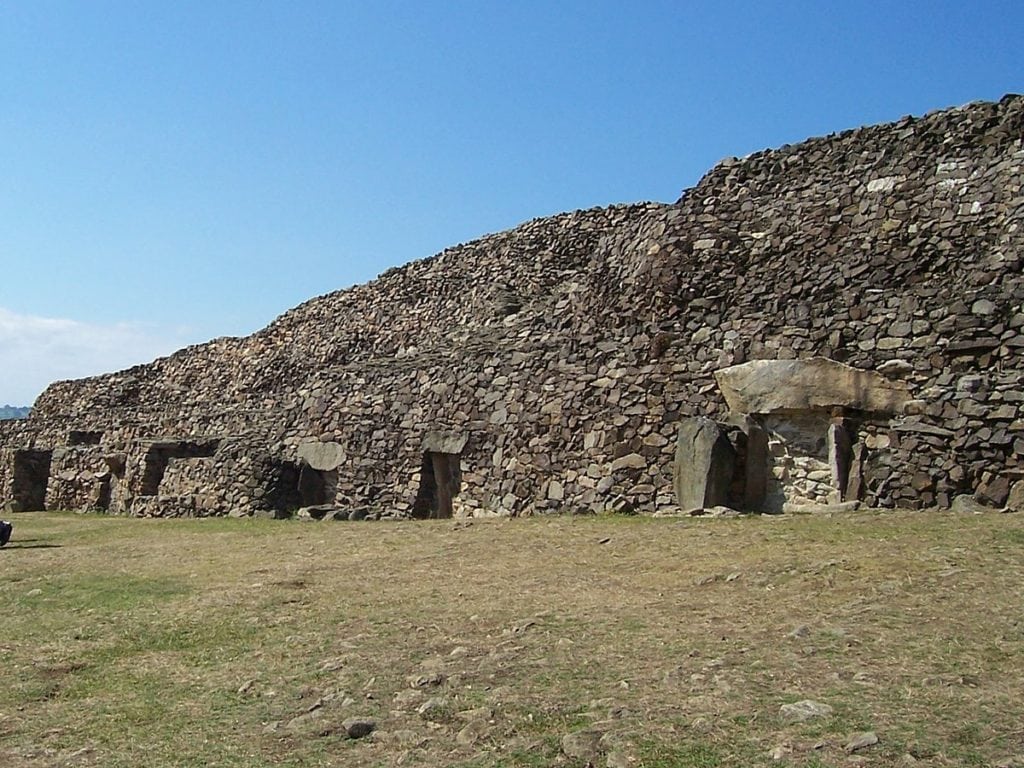
This megalithic burial mound, the Cairn de Barnenez, is the oldest structure that is still standing in all of France. The Cairn de Barnenez was originally referred to as the “Prehistoric Parthenon” by French author and politician André Malraux. However, this characterization is somewhat dubious given how similar and dissimilar the two monuments are.
Because of its historic past, there are several versions of when it first began. The monument’s second phase is claimed to have started around 4200 BC and concluded in 3900 BC. The monument’s initial phase is said to have lasted from 4850 BC to 4500 BC.
Did You Know?
The biggest megalithic tomb in Europe is the Barnenez.











